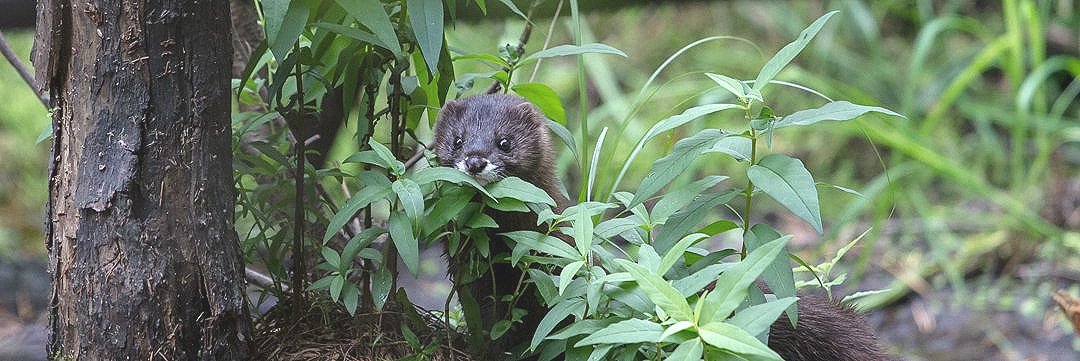
Europe’s most threatened carnivore
European Mink © Tiit Maran
European Mink
Once found across Europe and Russia, European Mink is now restricted to very small populations in France, Spain, Romania, Ukraine, Russia and Estonia. The species now occupies less than 3% of its former range.
What caused this massive decline?
-

Overexploitation
European Mink was once trapped in huge numbers for its fur. This lead to large population crashes across its range.
-

Habitat loss
The loss of healthy wetlands and rivers is a cause of historical declines and an ongoing threat. European Mink habitat is now fragmented and declining in quality.
-

The invasive American Mink
As European Mink populations crashed, trappers and fur traders turned to the larger non-native American Mink. American Mink was introduced and fur farms were established. American MInk quickly established itself across Europe and Russia, outcompeting the native European Mink.

The American Mink is the main threat to the European Mink
American Mink © Algimantas Barzdzius / Alamy Stock Photo
What needs to happen?
-

Protect and restore wetlands and rivers
Large riverine wetlands need to be protected. Riverine habitats across the species range need to be restored and connectivity improved.
-

Remove American Mink
American Mink needs to be eradicated from European Mink habitats. Mink fur farms need to be closed; escapes are common. Mink farms are a threat to human health: Covid-19 can transmit from farmed mink to people.
-

Conservation breeding
Most European Mink populations are too small to recover without assistance. Conservation breeding in captivity is needed to support population recovery and reintroduction.
-

Establish new populations
Where safe to do so, new populations of European Mink will need to be be established. Minks from conservation breeding programmes will be used to support these efforts.
Useful resources
-
Maran and Henttonen. 1995. Why is the European Mink (Mustela lutreola) disappearing? - A review of the process and hypotheses.
-
Harrington et al. 2017. Raising awareness of the plight of the critically endangered European mink in Spain is not miscommunication: a response to Melero.
Partners
Foundation Lutreola are registered in Estonia and are an important partner for European MInk conservation. Please consider making a donation at Account EE907700771002039230, AS LHV Pank, Tartu mnt 2, 10145 Tallinn, BIC/SWIFT: LHVBEE22


